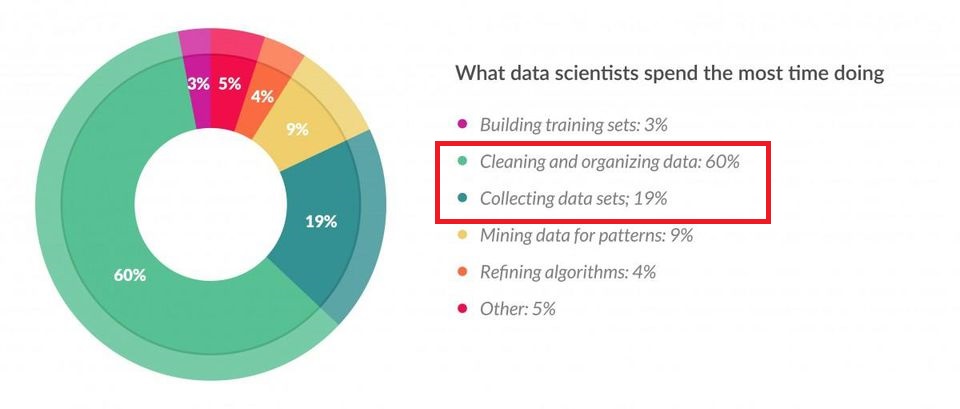To understand and respond to trends that impact business performance, it’s critical that you know where to find corresponding data and how to tie the many different pieces together for business intelligence reporting. But, do you know for a fact if the underlying data that your reports and dashboards are based on is clean and accurate? If you’re not using a data cleansing tool in your data warehouse or your Master Data Management (MDM) system, you’re likely basing important decisions on faulty data.
According to the Harvard Business Review, bad data costs $ 3.1 trillion to US businesses annually! The reason bad data costs so much is that managers, decision-makers, data analysts, knowledge worker, and others must accommodate it on an everyday basis. And that’s both expensive and time-consuming. Faced with critical deadlines, most simply resort to fixing the data themselves to whatever degree they can. As a result, bad data gets pushed forward into other systems across the enterprise, reflected in reports, business decisions, customer experience, and ultimately the bottom-line. Very few people actually reach out to the people responsible for collecting or creating the data, explain their requirements, and help fix issues in data at its roots.
The ‘What’ and ‘How’ of Data Cleansing Tools for Business Intelligence
“Data scientists spend nearly 80% of their time collecting and cleaning data rather than actually analyzing it.”
Investment in business intelligence and analytics requires first a dedication to cultivating the highest quality data possible. Successful BI and Analytics teams always prioritize 3 things during any project:
- High-quality data
- Effective data integration
- On-going data hygiene
To get high-quality data, you need a data cleansing tool that helps identify and fix inaccurate, incomplete, incorrect, and irrelevant data.
Easier said than done though. Those new to data cleansing often use the basic “find and replace” or regex functions through text editors or spreadsheets, or create in-house algorithms. At Data Ladder, we’ve seen that in-house solutions typically incorporate single public algorithms, and offer a very cumbersome and simplistic approach. This reduces both speed and match accuracy greatly.
Smart, future-oriented businesses that are serious about business intelligence prefer using a data cleansing tool for this purpose. They understand it’s not just about the algorithms ‒ it’s more about the entire process flow, how well the process is managed end-to-end, how disparate data sources are identified and integrated, how the different definitions in each system come together and make sense, how multiple matching algorithms work together, which one takes precedence over the other and when, does the organization understand the issues in their data properly to be able to get the most matches, etc. Ideally, your data cleansing tool of choice should also be able to monitor your data to prevent future instances of bad data.
The cleaner your data gets and stays, the better your analytics and overall business intelligence.
Questions You Need to Ask for Cleaner Data and Better BI
Ensure more meaningful outcomes for your business intelligence initiatives by asking these 5 questions before you start prepping up your data cleansing tool:
- Where does the required data live and how hard will it be to extract it?
This usually depends on your technological infrastructure. Enterprises, on average, use 65+ different data sources. The data you need for analytics could reside in Big Data lakes, spreadsheets, SQL databases, social media, CRMs, etc. For instance, if you are focusing on customer data for analytics, make sure your CRM data cleansing tool can integrate with your organization’s Salesforce and clean it efficiently, or whichever CRM you’re using.
- How will this data be gathered or imported into your data cleansing process?
Will the data be manually downloaded from your source systems and then uploaded for cleansing by existing personnel? If your data cleansing tool supports batch-loads, you can import the data automatically and then schedule periodic imports regularly. Alternatively, you can implement an API for real-time data import and cleansing.
- What sources provide the most accurate or reliable data?
The same type of data may reside across different data sources in your organization. Which one do you choose? Entity resolution is a good option here, so you can match across your data sources and get a complete record of each entity.
- What method will be used to ensure data stays clean?
How many people are validating new data as it comes in? Will the system stay resilient when it encounters dirty data? API solutions are again a good option here, helping you set up a data quality firewall behind web forms, etc. so dirty data is validated and fixed as it comes in.
- What will be the source of truth for your data?
If your reports are using data from both internal and external sources, or even if it’s coming in from a variety of different sources, how do you reconcile them? Matching your data to create a Single Source of Truth and then using that for BI is highly recommended.
Why Your BI Efforts Will Fail without Clean, Accurate Data
Data cleaning is considered a foundational element of data science basics, as it plays an important role in the analytical process and uncovering reliable answers.
All too often, business leaders resort to putting the horse before the cart. As in, dumping data scientists into the equation in their rush to achieve digital transformation. They fail to realize that these data scientists will still have to spend the majority of their time cleaning the data, as shown in the pie chart at the top.
With the right approach, businesses can better position themselves from enhanced insights — without involving costly data scientists.
Get your FREE consultation with our specialists to see how our data cleansing software can help you profile, clean, and match your data with unparalleled ease!











































